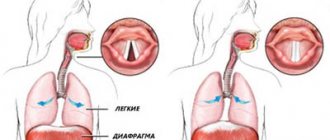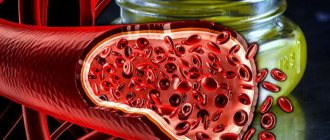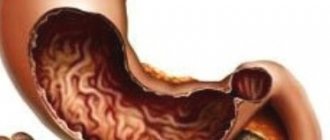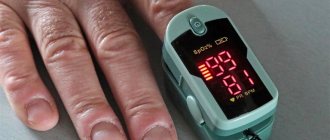Weight loss in a cancer patient is not the first sign of cancer. This symptom appears at a late stage, when no one has any doubt about the progression of the malignant tumor.
When they begin to look for a tumor in a significantly thinner person who has somehow avoided the attention of doctors, it is reckless to hope for stage I–II or even stage III of the tumor process—most likely, metastases will be found.
Even with stomach and pancreatic cancer, in which eight out of ten patients experience significant weight loss, the presence of an operable tumor can be considered a miracle. Of course, there are options when, against the background of as yet undiscovered cancer, a person begins to quickly lose weight. But this symptom is noted among others that are much more actively disturbing to the patient. For example, fever, severe pain in muscles and joints, as happens with some forms of lung cancer. Weight loss in this case is not associated with the tumor, it is secondary - the person is so bad that he has no time to eat.
When a cancer patient loses weight
During cancer treatment, patients often have to lose weight. During cancer surgery, there is no appetite before surgery due to stress. After surgery, you cannot eat as you want. As a rule, by the end of the first week an appetite appears, and after 3-4 weeks the weight returns to normal. After surgery on the gastrointestinal tract, the rehabilitation process is quite long, but weight loss is compensated over time, although not 100%.
During chemotherapy courses, there is no time to eat at all: nausea, vomiting, damage to the mucous membranes of the oral cavity and gastrointestinal tract. And also drug-induced anorexia - suppression of appetite due to taking certain medications. Radiation therapy can also initiate nausea - the esophageal mucosa is damaged by irradiation of the mediastinal organs, lung or mammary gland with areas of lymphatic drainage. When the organs of the genitourinary system are irradiated, the large intestine and rectum “burn”, which itself reduces appetite. Plus protective dietary restriction to reduce the frequency of bowel movements.
In all these situations, the weight does not decrease by more than 5% of the initial one, and after treatment, the body mass index (BMI) tends to increase. The main thing that distinguishes weight loss from cancer cachexia is the possibility of trouble-free weight gain after completion of the treatment process. [1,2]
Prognosis and prevention
The prognosis depends on the underlying disease causing cachexia. However, sudden weight loss is sometimes an important prognostic sign. For example, in the case of oncology, cachexia indicates the progression of cancer.
For eating disorders (anorexia, bulimia), the prognosis is more favorable. However, it is important to start treatment as early as possible, before complications arise.
There are no specific preventive measures for cachexia. It cannot be avoided when it comes to cancer or other serious pathology. Dramatic weight loss can be prevented by intentional fasting or the wrong weight loss diet. Consultations with specialized specialists will help with this: nutritionist, psychotherapist, psychiatrist.
Anorexia-cachexia syndrome
Until the beginning of the 21st century, it was simply called cachexia, which means bad condition in Greek. Cachexia is not just weight loss, as is commonly believed. This is a disease state characterized by loss of muscle mass, while loss of fatty tissue is optional. Muscle tissue is lost due to a combination of eating disorders - anorexia and metabolic disorders.
Anorexia-cachexia syndrome in cancer patients (ACCS) is composed of four symptoms: [1,2,3]
- reduction in skeletal muscle mass;
- anorexia – pathological lack of appetite, even to the point of disgust;
- rapid saturation with small amounts of food;
- fatigue.
This syndrome develops in the last stage of stomach and pancreatic cancer, in more than half of patients with lung, colon and prostate cancer, and in every third or fourth patient with breast cancer. In the terminal stage of the cancer process, when the progression of the tumor can no longer be stopped, anorexia-cachexia syndrome can develop with any malignant tumor.
Prevalence of anorexia-cachexia syndrome.
Anorexia-cachexia syndrome is triggered by a malignant tumor; through its vital activity it captures more substances and requires more energy than it supplies with nutrients. In addition to this, the tumor significantly reduces appetite and disrupts the digestion process itself. In 25% of cancer patients, SACOB is the cause of death. [2.5]
Medicines
Photo: ajp.com.au
Appetite-increasing drugs play a significant role in the fight against underweight caused by prolonged lack of appetite or if the patient has anorexia. Also, the use of these drugs is indicated for people with reduced secretion of gastric juice.
Enzyme preparations are used to improve the digestion process. Representatives of enzyme agents are divided into 3 groups:
- products whose main component is pancreatin (Mezim, Pancreatin, Creon);
- products containing, in addition to pancreatin, other auxiliary components, for example, hemicellulose, bile acids (Festal, Panzinorm);
- means promoting normal external secretion of the pancreas (Oraza).
In case of infectious complications, antibacterial drugs are used, the action of which is aimed at destroying or preventing further proliferation of pathogenic microflora. A specific group of antibiotics or their combination is used depending on the type of microorganism that caused the development of the infectious process.
To eliminate vitamin deficiency in the body, multivitamin preparations are prescribed. Each tablet of this drug contains the required amount of two or more vitamins. Some pharmacological companies produce products that contain a combination of vitamins and minerals. Such products are called vitamin-mineral complexes.
For the neuropsychic disorder underlying the development of cachexia, psychotropic drugs are used. These drugs are prescribed exclusively by a qualified specialist. The dosage and frequency of administration depend on the severity of the disease and the severity of symptoms.
How the body spends itself on energy
In a healthy body, a balance is maintained between calories received from food and energy expenditure; weight gain is more natural than weight loss. In any case, gaining weight is much easier than losing weight—considerable efforts are made to achieve this. With all the complexity of the processes occurring in the body, the entire system is tritely configured to create reserves in case of unexpected starvation. Nature has taught the body to store more substances than it spends.
When the supply of nutrients is limited due to diet or illness, energy expenditure to support life processes is maintained. And the first thing that begins is the utilization of reserves of subcutaneous fat, from which everything necessary is drawn. When subcutaneous fat runs out, it is the turn of the internal abdominal fat, then energy is drawn from the organs, where there are also fat cells. And only after the breakdown of fats into energy needs, muscle tissue proteins are used. And when “eating” muscles, the order is also included: skeletal muscles, then proteins from organs. And the more important the organ, the later it is “disassembled” into amino acids, which become a source of energy. [4]
PATHOGENETIC PROCESSES IN CAHEXIA
With cachexia, due to a failure of central regulation, there is a gross imbalance in energy metabolism, resulting in a dangerous combination of anorexia and hypermetabolism. It has been established that the main mechanism in the development of cachexia of any etiology is a systemic inflammatory reaction with activation of the production of proinflammatory cytokines: interleukins (IL) IL-1, IL-2, IL-6, IL-8, IL-10, interferon-γ (IFN- γ), tumor necrosis factor α (TNF-α) [50–51]. Cells of the immune system, in response to tissue damage, release cytokines that act through paracrine and endocrine pathways. Due to this, the local damage signal is amplified and spreads to distant areas. Proinflammatory cytokines directly or indirectly affect hypothalamic neurons, changing their activity. As a result, despite nutrient deficiency and weight loss, the metabolic rate remains the same or even increases, leading to a negative energy balance. There are suggestions about the presence of several mechanisms of signal transmission and changes in the activity of hypothalamic neurons by cytokines. This is a direct interaction with structures that do not have a BBB, initiation of cytokine synthesis directly by cells of the blood-brain surface, hypothalamus and central nervous system, as well as changes in the metabolism of peripheral mediators involved in the regulation of energy homeostasis, primarily leptin and ghrelin. The effects of inflammatory mediators on metabolism have been demonstrated in numerous rodent and human studies. Thus, in patients with CHF and cancer, the development of cachexia was preceded by an increase in the levels of circulating cytokines (TNF-a, IL-1, IL-6) [52, 53]. And intraventricular administration of several proinflammatory cytokines in rodents led to the development of anorexia, weight loss, increased energy expenditure, as well as catabolic processes in adipose and muscle tissue [54, 55]. In adipocytes (fat tissue cells), inflammatory mediators activate lipolysis to mobilize free fatty acids into the bloodstream. Data were also obtained on the initiation of the process of transformation of white adipose tissue into brown adipose tissue at the earliest stages of cachexia [56, 57]. Unlike white adipose tissue, which only provides lipid storage, in brown adipose tissue all the energy generated during oxidation is dissipated in the form of heat (thermogenesis). It has been established that the process of adipocyte transformation begins long before skeletal muscle atrophy and is associated with hypersecretion of IL-6 [58]. An increase in the mass of brown fat and activation of proteins that uncouple the oxidation process leads to active “burning” of energy and, as a result, a decrease in body weight. In muscle, cytokines induce protein breakdown to release amino acids along with inhibition of myocyte synthesis and differentiation. Against the background of mitochondrial dysfunction, the quality of muscle tissue also changes, which explains the occurrence of muscle weakness and fatigue in cachexia [59].
Unfortunately, the results of recent studies among cancer patients did not reveal a significant correlation between the level of serum cytokines and the onset of cachexia or its progression [60]. And treatment with antibodies directed at one cytokine did not give the desired results in preventing KS [61, 62].
Less is known about the role of the hypothalamus in the pathogenesis of endocrine dysfunction observed in the body during cachexia. It is known that testosterone concentration decreases in pathological conditions accompanied by the development of KS. The importance of testosterone deficiency is determined by its ability to stimulate myoblasts and produce specific agents that promote protein synthesis and effective restoration of muscle tissue. In addition, this hormone suppresses the release of macrophages and thereby the production of anti-inflammatory cytokines, such as IL-10. The role of decreased insulin-like growth factor type 1 (IGF-1), which also affects muscle mass and strength, is discussed. The hypothalamic-pituitary-adrenal axis has a potential contribution to the development of protein catabolism. Presumably, against the background of systemic inflammation, excessive release of corticotropin-releasing hormone is activated with subsequent hypersecretion of glucocorticoids. The latter, present in the blood in supraphysiological concentrations, promote protein catabolism.
Symptoms of cachexia
The most common symptoms of cachexia include:
- Loss of body weight.
- Anorexia (decreased or lack of appetite).
- Quick satiation with food.
- Constant fatigue.
At the pre-cachexia stage, body weight loss of up to 5% is possible within six months. There may also be anorexia, a systemic inflammatory response, and possible metabolic disturbances.
At the stage of cachexia, there may be a loss of body weight of more than 5% within six months, a continued loss of more than 2% of body weight with a BMI of less than 20 kg/m2, a possible decrease in skeletal muscle, anorexia, a systemic inflammatory response, and a decrease in the amount of food consumed.
And at the stage of refractory cachexia with pronounced catabolism, there is no effect from the therapy. The symptoms are most pronounced. The life expectancy of such patients, as a rule, does not exceed several months. [1,2,3]
IMPORTANCE IN CLINICAL PRACTICE
Cachexia syndrome (CS) is one of the most pressing problems of modern medicine. Unintentional weight loss often occurs in clinical practice, accompanying the course of many diseases. Cachexia as a complex metabolic syndrome develops in most chronic somatic pathologies, such as chronic heart failure (CHF), chronic kidney disease (CKD), diabetes mellitus, chronic obstructive pulmonary disease (COPD), acquired immunodeficiency syndrome (AIDS), rheumatoid arthritis, disease Alzheimer’s and others, and, of course, in cancer [4, 5]. Cachexia can develop with tumors of any location. The development of this syndrome is most often observed in tumors of the upper gastrointestinal tract, lung, breast, head and neck [6]. It is known that even slight weight loss in patients determines an unfavorable prognosis of the underlying disease, reduces the effectiveness of therapy, and is a powerful predictor of high mortality [5, 7–9]. In particular, in surgical patients, malnutrition leads to a significant increase in the frequency of postoperative complications, including infectious ones, increased length of hospitalization and deaths [10].
Degrees of cachexia
Cachexia not only leads to loss of strength, it changes the response to anticancer treatment and impairs tolerability, which has a fatal effect on life expectancy.
With a loss of no more than 5% of body weight over six months, accompanied by a pathological aversion to food and signs of inflammation, precachexia is assumed. A systemic inflammatory reaction can be considered when the temperature is above 38 °C or below 36 °C, tachycardia from 90 beats, rapid breathing, white blood cells above 12 thousand or below 4 thousand. Only at the stage of precachexia can treatment stop the loss of muscle mass, which will change the immediate fate of the patient.
If there is a loss of more than 5% of weight with all the indicated signs, they speak of cachexia itself. The same condition occurs in a patient with initially low weight with a loss of only 2% of body weight. Further decline is not just a decrease, but a form of exhaustion with the inability to get out of bed or, due to weakness, spend more than half a day in it, unresponsive use of antitumor therapy is already refractory cachexia. [3,5,6]
MAIN POINTS OF CENTRAL REGULATION OF ENERGY METABOLISM
Despite significant fluctuations in food intake from day to day, a person is able to maintain stable body composition and weight for a long time. This is due to the presence of mechanisms for precise control over energy intake and expenditure. The key structure in the regulation of energy homeostasis is the hypothalamus. For the first time, understanding of the leading role of the hypothalamus in the regulation of body weight appeared in 1940. Experimentally on an animal model, it was established that the destruction of the ventromedial hypothalamus without damage to the pituitary gland leads to an increase in appetite, hyperinsulinemia and obesity, as a result of which this department was called the “satiety center.” On the contrary, the area of the lateral hypothalamus, the destruction of which contributes to a decrease in appetite and body weight, is the “hunger center” [19].
Further studies showed that the hypothalamus is a complexly organized network of neurons and is responsible for the implementation of complex homeostatic reactions. From the point of view of energy homeostasis, the most important are the arcuate nuclei of the mediobasal hypothalamus. It is now known that within this region there are two groups of neurons that act oppositely on energy metabolism [20–24]. Their activity is modulated by signals from the periphery through hormones, neurotransmitters and nutrients, which ultimately determines the intensity of metabolism and feeding behavior [20, 22]. The possibility of such interaction is determined by the localization of the arcuate nuclei near the semipermeable vessels of the median eminence and the presence of developed neuronal connections with other parts of the brain (paraventricular, dorso- and ventromedial nuclei, as well as the lateral hypothalamic region and the brain stem).
Neurons of one population have catabolic effects on metabolism and anorexinogenic (appetite suppressing) effects. They produce cocaine- and amphetamine-regulated transcript (CART) and pro-opiomelanocortin (POMC), one of whose derivatives is alpha-melanocyte-stimulating hormone (α-MSH). POMC neurons are also localized in the nucleus of the solitary tract of the brainstem. CART has been shown to reduce appetite and the rate of fat accumulation [24, 25]. The expression of CART, along with other effector molecules, increases when the arcuate nucleus of the hypothalamus is stimulated by leptin [26, 27]. α-MSH promotes weight loss through the activation of melanocortin receptors of the fourth and, to a lesser extent, type three (MC4R, MC3R), which are directly related to metabolic rate [28–29]. As a result, appetite is suppressed and energy expenditure is increased, including by influencing thermogenesis through the thyroid gland, sympathetic nervous system and brown adipose tissue. The second population of neurons in the arcuate nucleus secretes orexinogenic peptides (increasing appetite) – neuropeptide Y (NPY) and agouti-related protein (ALP, agouti-related peptide). Neuropeptide Y, interacting with the Y1R and Y5R receptors, increases appetite and promotes fat deposition [30]. Studies have shown how central (intraventricular) administration of NPY in rodents causes a sharp but short-lived increase in appetite, and with chronic administration, weight gain [31–32]. However, the fact that mice with an inactivated NPY gene maintain stable body weight indicates the presence of compensatory effects of ACP. The latter is an endogenous antagonist of melanocortin receptors MC3R and MC4R. Thus, it exerts its anabolic effect by suppressing the anorexinogenic effect of α-MSH. Unlike NPY, the effect of APB is longer. In an experiment, when it was administered centrally, hyperphagia persisted for 6 days [33]. Thus, the activity of hypothalamic neurons, and therefore the metabolic rate, changes according to the needs of the body in a given period of time.
As mentioned above, information about the nutritional status of the body (food intake, amount of fat depots) comes to the neurons of the hypothalamus through signaling molecules. The main ones include leptin, insulin, ghrelin, glucose, free fatty acids and others.
Leptin is secreted primarily by white adipose tissue cells and is an indicator of subcutaneous fat reserves [34–36]. While insulin levels are proportional to the amount of visceral fat. Information about the content of both hormones allows you to estimate the total amount of fat mass in the body. Leptin and insulin have similar effects on arcuate nucleus neurons. According to modern concepts, through the activation of specific receptors (OB-Rb), leptin stimulates the production of α-MSH and suppresses NPY/ACP-secreting neurons, which leads to a decrease in appetite, increased energy expenditure and tone of the sympathetic nervous system [27, 37]. Experimental studies have shown that only adipose tissue mass decreases with leptin administration [38]. In humans, high leptin concentrations are observed only a few days after a heavy meal, while its low values are recorded several hours after the start of fasting [39]. With weight loss, leptin levels decrease, warning the brain about insufficient energy reserves, which is manifested by increased appetite and slower metabolism. The adaptive role of leptin during fasting is also due to a decrease in energy expenditure due to a decrease in the synthesis of thyroid hormones, mobilization of energy resources through increased production of glucocorticoids and suppression of reproductive function [22].
In many ways, the opposite effect on the activity of neurons, and therefore the rate of metabolic processes, is exerted by ghrelin, produced by endocrine cells of the gastric mucosa [35, 40]. Having been identified as a stimulator of growth hormone (GH) secretion, subsequent studies established its important role in the regulation of homeostasis. This peptide has a powerful effect on appetite and is regulated by food intake. The central action of ghrelin is mediated by receptors located in the same hypothalamic nuclei as leptin receptors. In contrast to the latter, ghrelin activates NPY/ACP neurons and suppresses the effects of POMC/MAP neurons, promoting an increase in appetite. NPY primarily provides short-term effects of ghrelin, and through APB, the long-term effects of ghrelin are also realized. Fasting ghrelin levels have also been shown to be inversely related to body weight [41]. The high levels of ghrelin observed in cachectic patients and patients with anorexia nervosa suggest an adaptive response to body weight loss aimed at restoring fat depots [42–44]. In an experiment, the use of ghrelin in rats showed an increase in body weight and preservation of muscle tissue in a model of cancer cachexia and chronic renal failure [45–46]. Currently, a tableted highly selective ghrelin receptor agonist, anamorelin, has been developed, which in a clinical study demonstrated effectiveness in increasing muscle mass and improving appetite in patients with KS [47]. Taking into account the current lack of a drug that would not only effectively, but also safely act on muscle tissue, anamorelin may be a potential therapeutic option for patients with KS.
The brain stem plays an important role in the homeostasis of energy exchange. A complex of brainstem nuclei (dorsal, nuclei of the solitary tract, posterior extreme region) interpret peripheral signals arriving here due to the incomplete blood-brain barrier and transmit them to the hypothalamus. The neuroanatomical connection between the gastrointestinal tract and the brain is provided by the vagus nerve; its afferent fibers transmit information about the state of stomach filling, the level of gastrointestinal peptides and free fatty acids to coordinate energy metabolism [48–49].
Thus, as a result of analyzing information about the nutritional status of the body (meals, amount of fat reserves, energy expenditure), the hypothalamic nuclei ensure the adaptation of metabolic processes according to the needs of the body. With insufficient calorie intake or weight loss, a healthy person develops a normal adaptive response in the form of changes aimed at conserving energy (decreasing metabolic rate, increasing appetite and increasing food consumption, redistributing energy resources) and ultimately maintaining a stable body weight. And in the case of prolonged forced fasting, metabolic adaptation allows the use of fat depots as the first source of energy, preventing the loss of muscle mass. When adequate nutrition is restored, these processes are completely reversible, thereby fundamentally distinguishing nutritional malnutrition from KS.
Diagnostics
To make a diagnosis, fairly simple screening methods can be used, which include:
- Measuring body weight.
- Shoulder circumference measurement.
- Determining the volume of food consumed.
However, it is worth recognizing that clinicians rarely use these methods to make a diagnosis, especially at the onset of the disease.
First of all, it is important to understand how the patient explains the decrease in food intake. This may be due to a violation of taste or smell, as well as some gastrointestinal disorders (nausea, vomiting, constipation, etc.). The next important criterion is the assessment of the level of catabolism, which is carried out by the level of C-reactive protein. However, the development and progression of cachexia may not be accompanied by an increase in this indicator.
When conducting an objective examination, it is important to assess skin turgor, pay attention to the presence of edema, examine the oral cavity for the presence of stomatitis, and assess body weight.
Late diagnosis of cachexia is a significant problem, since in this case therapeutic options (symptomatic therapy, nutritional support) are significantly limited, which are effective only at the onset of the disease. [1.8]
Treatment of cachexia
Even when the process of exhaustion has gone very far, and it is no longer possible to prevent the ongoing melting of skeletal muscles, it is necessary not only to maintain life in a person - it is necessary to improve his condition. It is imperative to reduce the manifestations of symptoms that affect the decrease in nutrient intake: reduce nausea, treat damage to the mucous membranes. Try to increase your appetite and relieve pain, because when you are in pain you don’t think about food. And, of course, establish nutrition with special mixtures and protein solutions. [2.7]
There are more treatment options than patients and even therapists realize. It is impossible to cure cachexia, but giving a person the opportunity to live is possible and necessary. And this is what Euroonco doctors do.
Book a consultation 24 hours a day
+7+7+78
Bibliography:
- Kononenko I.B., Larionova V.B., Manzyuk L.V. — Clinical recommendations for the correction of anorexia-cachexia syndrome in cancer patients. — Moscow 2014
- Snegovoy A.V., Kononenko I.B., Larionova V.B. — Practical recommendations for the correction of anorexia-cachexia syndrome in cancer patients. — — DOI: 10.18027/2224-5057-2016-4s2-469-475.
- Sytov A.V., Zuzov S.A., Leiderman I.N., Khoteev A.Zh. - practical recommendations for the correction of anorexia-cachexia syndrome in cancer patients. DOI: 10.18027/2224-5057-2020-10-3s2-44.
- Klochkova I.S., Astafieva L.I., Kadashev B.A., Sidneva Yu.G., Kalinin P.L. Pathogenetic aspects of cachexia syndrome // Obesity and metabolism. – 2021. – T. 17. – No. 1. – pp. 33-40. doi: https://doi.org/10.14341/omet10173.
- Michael J. Tisdale. Mechanisms of Cancer Cachexia. — Physiol Rev 89: 381–410, 2009; doi:10.1152/physrev.00016.2008.
- Kenneth C. H. Fearon, David J. Glass. – Cancer Cachexia: Mediators, Signaling, and Metabolic Pathways. Cell Metabolism 16, August 8, 2012. https://dx.doi.org/10.1016/j.cmet.2012.06.011
- Ada M. Lindsey. Cancer cachexia: Effects of the disease and its treatment. Seminars in Oncology Nursing, Volume 2, Issue 1, February 1986, Pages 19-29. Seminars in Oncology Nursing. https://doi.org/10.1016/0749-2081(86)90005-7.
- J. Arends, F. Strasser. — Cancer cachexia in adult patients: ESMO Clinical Practice Guidelines. Volume 6 -Issue 3 - 2021. https://doi.org/10.1016/j.esmoop.2021.100092.











